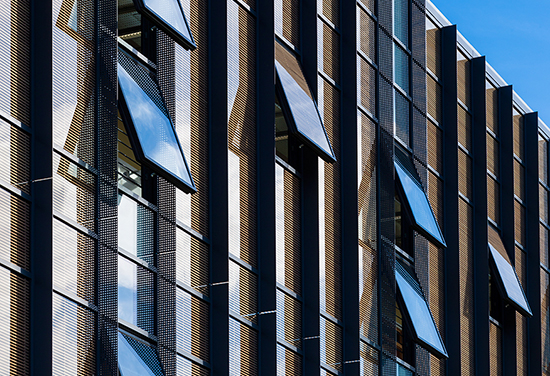Air is Cultural
Temperature and climate are cultural issues that impact architecture and the design of air. Climate influences architectural design and building materials, while cultural practices and values influence how people interact with the built environment and the natural environment.
In many parts of the world, architecture reflects the local climate and culture. In hot and dry regions, buildings often feature thick walls and small windows to provide shade and reduce heat gain. These design features reflect the cultural practices of seeking refuge from the intense sun and heat. Conversely, in colder regions, buildings often have sloping roofs to shed snow and prevent ice buildup. These design features reflect the cultural practices of protecting against the harsh winter weather. In both cases, architecture is designed to accommodate the local climate and cultural practices.
The design of air conditioning systems also reflects cultural values and practices. In some cultures, air conditioning is seen as a luxury or even a sign of status, while in other cultures, it is seen as a necessity for survival. For example, in the United States, air conditioning is ubiquitous and often seen as a necessity for comfort and productivity in the workplace. In contrast, in some parts of Europe, air conditioning is not as prevalent, and people rely on natural ventilation and shading strategies to stay cool.
Air conditioning systems can also be designed to promote cultural practices and values. In regions with a strong connection to nature, air conditioning systems can be designed to mimic natural ventilation and incorporate outdoor spaces. This design approach promotes a connection to nature, which is valued in many cultures. In regions with a tradition of communal living, air conditioning systems can be designed to promote social interaction and communal spaces. This design approach promotes cultural values of social cohesion and community.
Another way air conditioning systems can be designed to promote cultural values is by incorporating renewable energy sources. In regions with a tradition of environmental stewardship, air conditioning systems can be designed to use renewable energy sources like solar power or geothermal energy. This design approach promotes cultural values of sustainability and environmental responsibility.



Maura, I enjoy your tie between temperature, comfortability, and culture. I wonder if America will ever be able to go back to a more primitive state of limiting their usage of machinery and equipment such as HVAC for comfortability? I think it has become too integrated into our society and temperature control and comfortability is something expected to do a 180, however, I believe that a hybrid is a more reasonable and attainable solution. We can slowly begin to implement passive and sustainable strategies and materials used to help aid our established technologies and systems.
ReplyDeleteMaura, all great points! I think it's an unfair argument to compare the lifestyles that cultures have learned to live in and state one to be better than another due to their use or the type of air conditioning they choose to use. In other news, what type of air conditioning and ventilation do you think is best for comfort and users? Let's set the scene in Lee 3. Variable Air? Passive Strategies? Each desk gets its own mini-split?
ReplyDelete